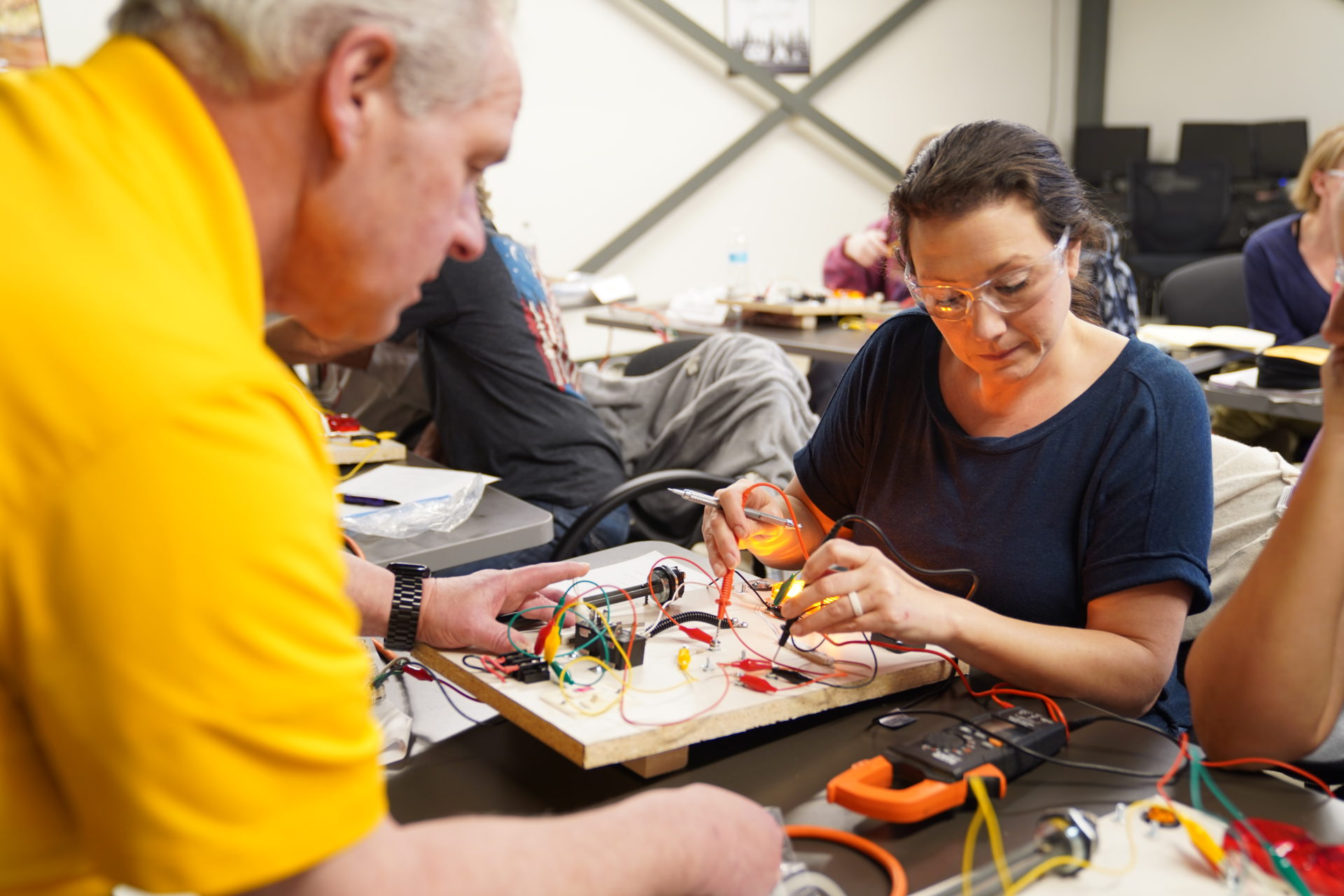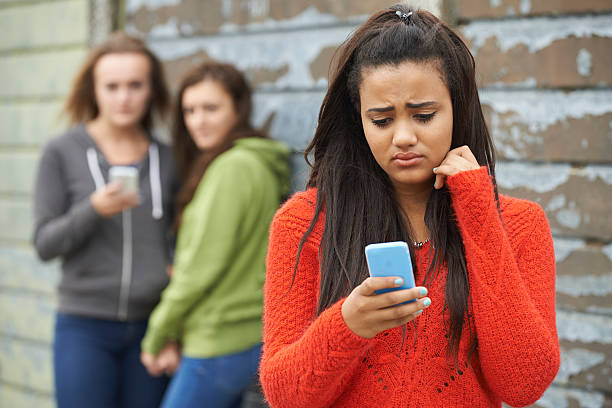
Bullying at School: Silent Warning Signs Every Parent and Teen Should Know

Bullying at School
Bullying at school — we’ve all heard of it, and quite a few of us have experienced it firsthand.
In fact, bullying statistics from the National Center for Education Statistics suggest nearly 1 in every 5 students experiences bullying at school. Bullying at school is a major contributor to stress in teenagers, often affecting their mental health, academic performance, and overall well-being.
With the challenges of the pandemic still lingering and kids spending so much time online and on social media, it’s more important than ever to talk about bullying. In this article, we’ll review types and signs of bullying that parents, guardians, and friends should know about. Hopefully, the tips and advice will help you or a loved one identify potential bullying situations — and empower you to speak up. But before we review bullying statistics, let’s start with a definition of how bullying at school might look.
What is bullying?
Bullying at school goes beyond stress and teenagers — it's a serious problem that requires immediate action. Bullying is aggressive behavior involving an imbalance of power or strength. It’s typically a repeated behavior, but parents and teachers should still take even occasional instances of bullying at school seriously. Most often, students commit bullying at school in a social or verbal context, as harmful rumors or name-calling. In other cases, bullying manifests as physical violence. It’s important to note, however, that bullying in any form is extremely harmful.
Bullying at school has far-reaching negative effects on the target and the entire community. Bullied students typically suffer mental and emotional distress and have a higher risk of self-harm and injury. Students who engage in bullying behavior are at risk of behavioral and academic problems, as well as substance misuse later in life. Bystanders caught in the crosshairs of bullying aren’t immune to its effects, either. Their school attendance may be negatively impacted, and the risk of mental health problems could increase.
Cyberbullying, especially, can cast a long shadow. Harmful images, videos, and comments may remain accessible even after being “deleted,” especially if they’ve been screenshotted or reposted by others. In any case, a damaged reputation lasts a long time, as does the emotional trauma of adolescent bullying.

Common types of bullying
According to bullying statistics from the Centers for Disease Control, the most common types of bullying at school are:
- Physical, including slapping, kicking, and tripping
- Verbal, including name-calling and teasing
- Social or relational, including spreading rumors and exclusion from activities
As social media becomes more popular with younger demographics — over 90% of teens 13-17 report using social media — bullying increasingly takes place online as well as in person. Cyberbullying, a form of bullying that uses technology, is especially challenging to catch and stop, since bullies can hide their activity through private messages or anonymous accounts.
Regardless of its form, bullying at school should never be taken lightly. Common signs of bullying, like declining school performance, poor attendance, and mental health problems, can affect anyone. A 2022 study showed that the impacts of social or relational bullying can cause as much damage as physical bullying. Even after the bullying stops, recovering from the damage takes time and effort, and may even require professional help.
Most often, bullying at school happens to students who have characteristics that make them stand out from their peers. These can include ethnicity, social class, physical appearance, mental or physical disabilities, gender and sexuality, or moral or religious beliefs. Even in diverse school environments, students can and do suffer bullying for perceived differences. However, the factors motivating students to bully others aren’t always clear.
Why do kids bully?
There are many reasons why people engage in bullying at school and online. It’s easy to think that students who bully are simply mean or just want to feel powerful. However, it's often nuanced and complex, and stems from deep-seated insecurities. Here are some factors commonly observed in people who bully, though they’re not always definitive signs of bullying behavior.
Learned behavior: It’s not uncommon for young people to mimic behavior they see in their homes and communities. Some students who bully also witness or experience violence in their daily lives, from peers or authority figures. They may lack emotional or moral support from a parent or guardian. A shortage of positive behavioral role models can normalize bullying behavior.
Inner conflict: Some youth who bully at school do so because they have low self-esteem. They may have never learned emotional regulation or how to manage their emotions, leading them to take their frustration or fear out on others. These youth may struggle to understand other people’s emotions or how to have healthy interactions with peers, especially if they’ve never been taught or seen appropriate behavior modeled.
Social dynamics: Some more impressionable students who tend to be followers rather than leaders may bully others due to peer pressure. They may engage in bullying behavior for status and clout. Some young people bully to fit in with others — or to establish a pecking order, or who’s “in” and who’s “out.” Others do so to control the behavior of those they bully and any witnesses, asserting their authority.
Every person who bullies does so for different reasons, and the harm from bullying goes both ways. When we prevent bullying, we help targets and potential bullies.
Key warning signs of bullying
Nearly half of the students who experience bullying at school report it to a trusted adult — yet over half remain silent. To help prevent bullying, peers, parents, and educators must recognize common warning signs of bullying and identify concerning behaviors that may indicate potential issues. Then, they must take proactive and early action, rather than waiting for someone to speak up.
Some signs of bullying are more obvious than others. Young people victimized by physical bullying may have unexplained bruises, injuries, and scars. Missing or broken clothing, electronics, or other personal items can also point to bullying at school. But these are only the most visible signs of bullying.
Parents and guardians may notice their student is generally anxious. They may be particularly afraid of school and social events, or their anxiety might manifest as physical discomfort, like stomachaches or insomnia. Other signs of bullying may include absenteeism, either by calling in sick or skipping school entirely. Absenteeism aside, another common sign of bullying is poor school performance.
It isn't always easy to see.
Many adults may struggle to spot the warning signs of bullying. Stress and teenagers usually go hand in hand, which can mask signs of bullying, like heightened anxiety and aggression. It’s easy to chalk up sleepless nights to anxiety about an upcoming exam or a spat with a friend. Frowning at their phone? Must be doomscrolling again. While mood swings and stress are a normal part of being a teen, parents, guardians, and educators should keep an eye out for the signs of bullying.
Common signs of bullying:
- Frequent unexplained injuries, such as bruises or scratches, often with vague or unlikely explanations.
- Complaints of physical ailments, like headaches, stomachaches, or feeling sick, especially if they coincide with certain times (e.g., before school or certain activities).
- Sudden mood swings or emotional outbursts, including anger, crying, or irritability, that seem out of proportion to the situation.
- Expressions of hopelessness, worthlessness, emotional numbness or depression, which may include phrases like "nothing matters" or "I hate my life."
- Damaged or missing personal belongings, such as torn clothing, broken electronics, or lost money, with unclear or evasive explanations.
- Increased secrecy around technology use, including hiding their phone, quickly switching screens, or becoming upset when asked about online activity.
- Withdrawal from social activities, avoiding friends, school events, or hobbies they once enjoyed.
- Noticeable drop in academic performance or school attendance, including skipping classes or wanting to stay home more often.
- Changes in appearance or personal hygiene, such as a sudden lack of concern for grooming or wearing the same clothes repeatedly.
- Disturbed eating or sleeping habits, including trouble falling asleep, nightmares, overeating, or skipping meals.
- Signs of self-destructive behavior, such as experimenting with drugs or alcohol, taking unnecessary risks, or making concerning comments about self-harm.
- Spending excessive time online, especially late at night or in isolation, possibly as a coping mechanism or a way to avoid real-life interactions.
How to prevent bullying at school
Just like understanding the reasons and signs of bullying isn’t easy, preventing bullying isn’t simple. A cohesive strategy for preventing bullying requires the entire school community, from staff, parents and guardians to other students, to be vigilant for and intervene in situations of bullying. Preventing bullying should never be the sole responsibility of the target.
Meeting students’ emotional and developmental needs helps them feel secure, eliminating the urge to hurt others. Adults must create safe, supportive, and positive environments at home, school, and elsewhere for all students. Strategies might include:
- Implementing emotional and social education about healthy ways to process and express feelings.
- Proactively watching for and addressing signs of harmful behavior, poor mental health or negative feelings.
- Maintaining open lines of communication and encouraging students to get support before they turn to bullying.
Supportive environments should also set clear behavioral expectations and have a community-based approach to holding students accountable. Parents and school staff should definitively and clearly communicate expectations on how students should treat each other. Those adults must also make it clear that poor decision-making, including bullying, is unacceptable and has consequences. And students should know exactly what those consequences are. Staff should also be informed about the school laws on bullying in their state, and inform parents and guardians accordingly.
Working with your child to prevent bullying
As a parent or guardian, you may worry about your child being bullied or even becoming a bully. Check in with your child often, asking them about school, their life, and their feelings. A baseline reference for their feelings about school and peers can help you notice changes in behavior. Act as a role model, and be available to talk them through difficult situations, bullying or otherwise.
While it can be tempting to step in yourself and “fix” the situation, guiding your child to self-advocate is a skill that will serve them well throughout their life. Teaching your child how to respond to bullies might include helping them find new hobbies that build confidence. If you and your child aren’t able to find a safe path forward, however, alert school officials to work with them on a solution.
If you’re worried that your child is the bully, taking their behavior seriously is the first step toward putting a stop to it. As their parent or guardian, you’re perhaps best positioned to address their behavior. Teach them about bullying, why and how it harms, and confirm their understanding that their actions constitute bullying. Be a positive role model by implementing firm but compassionate nonphysical discipline and supervising their online and offline time. And remember, you don’t have to go it alone. Reach out to school staff and other parents for support and suggestions on how to guide your child. Also, consider speaking with your child’s doctor, as deeper emotional or behavioral issues may be causing them to act out or bully.
Learning to be an upstander vs. a bystander
It’s natural to worry about your child who’s experiencing bullying at school. While it’s important to watch them for signs of bullying, don’t discount their importance as a potential bystander — someone who sees a peer being bullied and does nothing. Every student who responded to this NCES survey on bullying said they had witnessed or been aware of an incident of bullying at school. How many do you think felt empowered or called to intervene?
Encourage your child to be an upstander — someone who takes action when they see bullying — rather than a bystander. Teach your child about the importance of reporting bullying and of being a friend and role model to their peers. One voice for kindness can make all the difference.
Bullying statistics
There are many bullying statistics that speak to the prevalence of bullying at school. Earlier, we shared that nearly 20% of students in a 2022 American study reported being bullied. That same study reported that proportionally more middle school students were bullied than high school students (26.1% and 14.6%, respectively). Female students were more likely to be bullied than males and were more likely to suffer relational or verbal bullying than physical bullying. Approximately 13% of students reported they were bullied for their race. Nearly 10% reported the same for disability, ethnic origin, gender, or sexual orientation.
A 2024 brief from the National Center for Health Statistics offers more insights into victims of bullying and the psychological and physiological effects they may experience. Sexual and gender minority (LGBTQ+) students and students with developmental disabilities are significantly more likely to be bullied. Across the board, bullying coincided with a much higher rate of recent symptoms of anxiety and depression. Bullied students also reported more negative feelings about themselves, their schoolwork, and their relationships.
Bullying statistics from the 2023 Cyberbullying Research Center show that 54.6% of middle and high school students have been cyberbullied at some point. This number has nearly tripled since 2007 (18.8%). Of the students surveyed, about 27% reported experiencing cyberbullying in the previous 30 days, in the form of malicious comments, exclusion from group chats, and rumor spreading. As with bullying in general, female adolescents are more likely to be cyberbullied than their male peers.
While these bullying statistics may not be terribly encouraging, knowing is half the battle. PACER’s National Bullying Prevention Center shares up-to-date bullying statistics covering various aspects of bullying at school.
Resources on bullying
One of the most comprehensive resources on bullying at school is StopBullying.gov. This site offers numerous free resources for caring adults, school staff, and young people to help them understand and prevent bullying. It’s a great place to learn about:
- Digital awareness
- Community action against bullying
- How to talk about bullying
- Additional resources if you or someone you know is the target of bullying
While the site is made for an American audience, much of the advice is applicable to adolescents anywhere.
Community connections
For parents, guardians, and other caring adults, the community is one of your strongest assets. Connect with principals, teachers, counselors, and other parents to discuss policies regarding bullying at school. If you suspect another student is bullying or being bullied by your child, schedule a meeting with their parent or guardian.
Find out if your child’s school participates in National Bullying Prevention Month, and show your support by volunteering. If they don’t, consider spearheading a Bullying Prevention Week (or Month!) campaign. At home, be open to nonjudgmental discussion with your child, especially when it comes to talking about cyberbullying.
Bullying at school - tips for parents & teens
Bullying at school happens for a number of complex reasons, and it can have equally complex solutions. People who bully seldom do so out of simple malice; typically, there are often underlying emotional or social challenges. The impacts of bullying and cyberbullying on everyone involved are immeasurable, which is why it’s important to prevent bullying before it happens.
Today, we outlined the most common types of bullying at school and online, as well as some potential causes. Here are a few key takeaways:
- Watch for signs that your child might be experiencing bullying. Changes in mood, withdrawal, reluctance to go to school, or unexplained injuries can all be warning signs. Bullying doesn’t always happen where adults can see it, so staying tuned in matters.
- Kids shouldn’t have to face bullying alone — but they should be part of the solution. Help your child feel heard and supported. Encourage their input while also working with the school and broader community. Programs like social-emotional learning, digital safety education, and Bullying Prevention Week activities can make a meaningful difference.
- You don’t have to handle this on your own. If your child — or any child you know — is experiencing bullying, reach out to a teacher, counselor, or school administrator. Bullying should never be treated as “just part of growing up.” Many states have laws regarding bullying in schools that protect students’ right to feel safe. This is a serious issue, and there are people who care and want to help.
Bullying at school is far too common, but with the right community attitude, parent and guardian engagement, and teacher guidance, students can feel supported and safe at school. Everyone has a part to play. What’s yours?
Blog Categories
- Career Advice
- College Admissions
- Colleges & Universities
- Financial Aid and Scholarships
- For Counselors
- For Parents
- For Students
- Gap Years
- Mental Health and Wellness
- Online Learning
- Performing and Visual Arts
- STEM Majors and More
- Summer Programs
- Teen Volunteering
- Trade & Vocational Schools
- Tutoring & Test Prep

Organization with listings on TeenLife? Login here
Register for Free
We’re here to help you find your best-fit teen-centered academic and enrichment opportunities.
Forgot Password
"*" indicates required fields








